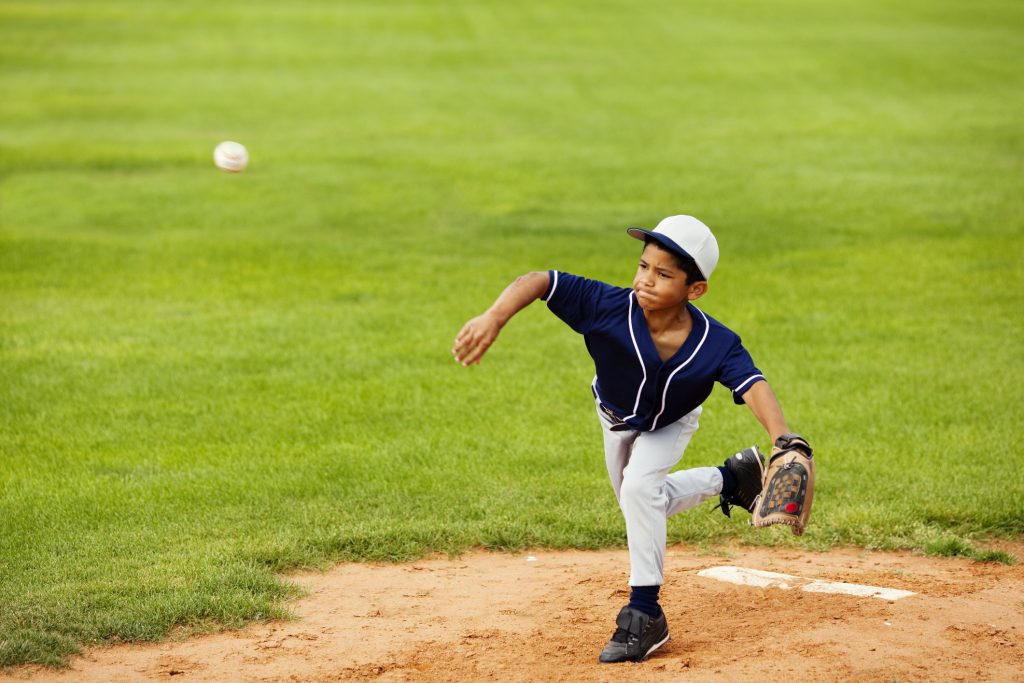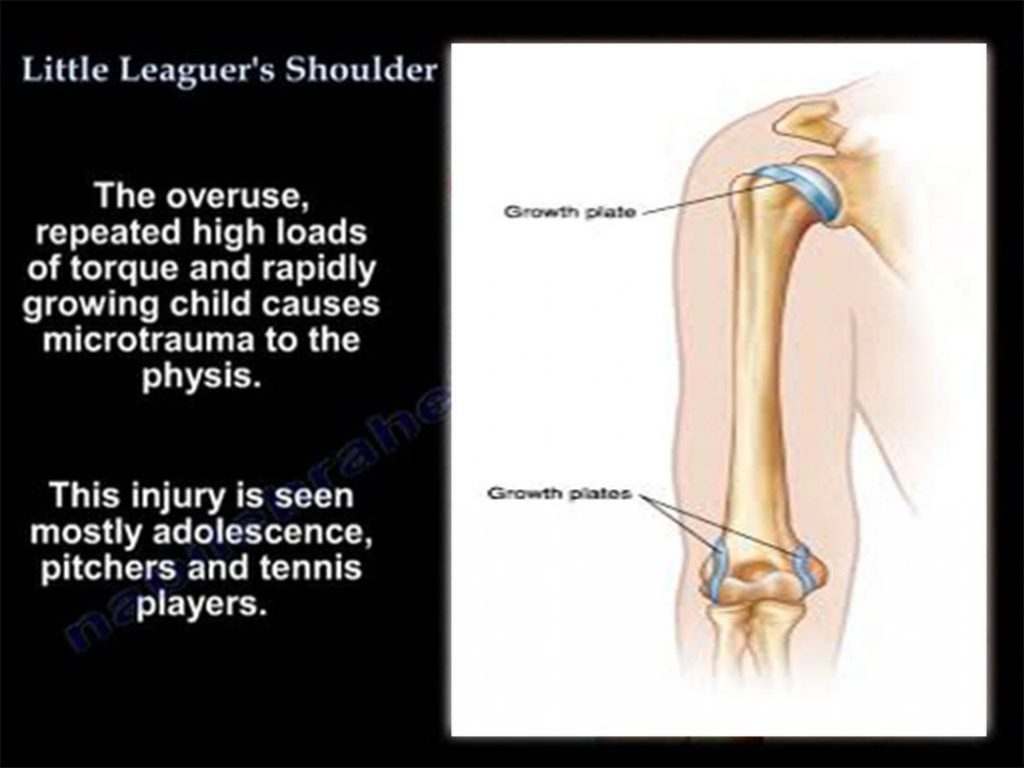
Overuse injuries are “chronic injuries related to repetitive stress on the musculoskeletal system without sufficient recovery time”. (1) Symptoms associated with overuse injuries develop slowly and are initially associated with playing sports. If they are left untreated, they can even occur during rest as the injury worsens.
1. Lack of coaching education
2. Inadequate pre-sports season physical clearance
3. Hazardous playing fields
4. Conditioning and training errors
5. Lack of or improper sports and safety equipment
6. Poor fitness and conditioning
7. Grouping teams by age instead of by size
8. Poor nutrition
9. Incomplete recovery time after injury
10. Inadequate supervision
11. Psychological stress
12. Varying levels of physical maturation (2)
Arm and shoulder overuse injuries in kids and adolescents tend to be associated with racket sports, swimming and baseball or any sport that involves frequent overhand movements. Baseball injuries in children are so common that baseball injuries have their own name including “little leaguer’s shoulder” and “little leaguer’s elbow”. Some studies indicate that approximately half of baseball players have some elbow or shoulder pain during their playing season but the exact number is probably even higher. Little leaguer’s shoulder occurs most commonly in male baseball players ages 11-14 years before the growth plates in the upper arm bone (humerus) have closed.
Players typically complain of worsening pain with throwing overhead. The pain can be eventually associated with daily activities and even during rest. The cause of little leaguer’s shoulder is thought to be due to constant traction and stress on the growth plate which results in separation along the growth plate or micro fractures. Many times x-rays of the shoulder can help make the diagnosis along with physical exam. Treatment of little leaguer’s shoulder is rest and activity limitations for about 3 months. Rest and modified activity will usually result in complete resolution of symptoms.

Little leaguer’s elbow is more complicated. It is caused by an inflammation of the “apophysis” or the site where the tendon inserts onto the medial side of the elbow.

Traction along the medial side of the elbow from repetitive pitching or throwing can result in swelling, separation or fracture of the medial part of the elbow. In severe cases, fractures may even have to be treated surgically. Treatment usually includes rest, ice and anti-inflammatory medications like ibuprofen. Symptoms usually resolve in 2-3 months.
Recommendations by the MLB limit the number of pitches per game by age and also provide rest guidelines. Littleleague.org has published very clear and strict recommendations to prevent overuse injuries from pitching. Recent guidelines have been expanded to include children under the age of 10 years. Check out their website for the most recent guidelines. As with any sport, knowledge and advocacy are the key to injury prevention.
13-16 – 95 pitches per day
11-12 – 85 pitches per day
9-10 – 75 pitches per day
7-8 – 50 pitches per day
If a player pitches 66 or more pitches in a day, four (4) calendar days of rest must be observed.
If a player pitches 51-65 pitches in a day, three (3) calendar days of rest must be observed.
If a player pitches 36-50 pitches in a day, two (2) calendar days of rest must be observed.
If a player pitches 21-35 pitches in a day, one (1) calendar days of rest must be observed.
If a player pitches 1-20 pitches in a day, no (0) calendar day of rest is required.
1. Christopher, N.C, Congeni J, “Overuse Injuries in the Pediatric Athlete: Evaluation, Initial Management, and Strategies for Prevention”. Clin Ped Emerg Med 3: 118-128
2. Soprano JV. And Fuchs, S. “Common Overuse Injuries in the Pediatric and Adolescent Athlete”. Clinical Pediatric Emergency Med. 2007 pp.1-14.
Looking for something specific? Write to Dr. Audrey Paul and let her know what topic you're interested in learning more about.
Get in touchLooking for something specific? Write to Dr. Audrey Paul and let her know what topic you're interested in learning more about.

